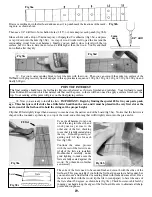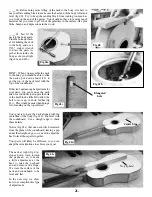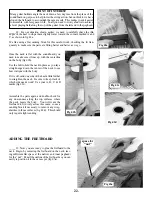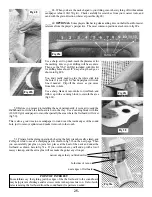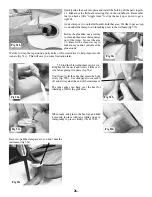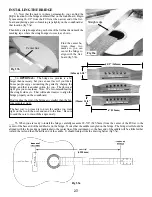
_____23. Now you need to install kerfing all around the back
edge of frame, just as you did on the front edge earlier (fig 23).
CAUTION: Don’t sand this kerfing with the flat sanding
block. You will make a curved block for this because the
back is arched (see step #30).
Fig 23
_____24. Turn the body over onto the inside of the back
panel and center it carefully on the centerline. Draw around
the outside of the frame with a pencil, as shown in fig 24.
Fig 24
_____25. Set a com-
pass to match thick-
ness of the back
edge with kerfing, as
shown in fig 25a.
Then use that setting
to draw the inside
outline on the back
panel, as in fig 25b.
Fig 25a
Fig 25b
_____26. Measure where the heel block and tail
block will fit on the back panel.
The heel block extends 1-3/4” (44.5mm) in from
the outer edge of the frame, as shown in fig 26a.
The tail block extends just 3/4” (19mm) in from
the outer edge at the tail end of the frame, as in
fig 26b.
These two lines will help you place the the flat
back bracing that goes down the centerline to re-
inforce the glue seam in the back panel.
Fig 26a
Fig 26b
12.
Summary of Contents for PARLOR
Page 36: ......



















